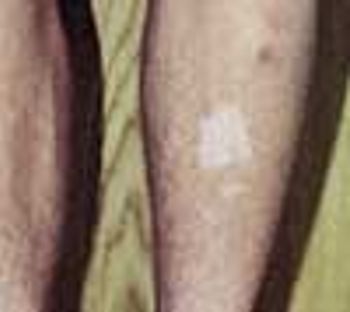
This 14-year-old boy presented with slowly progressive hypopigmented lesions that had been present on the lower extremities for the previous 2 years.


This 14-year-old boy presented with slowly progressive hypopigmented lesions that had been present on the lower extremities for the previous 2 years.
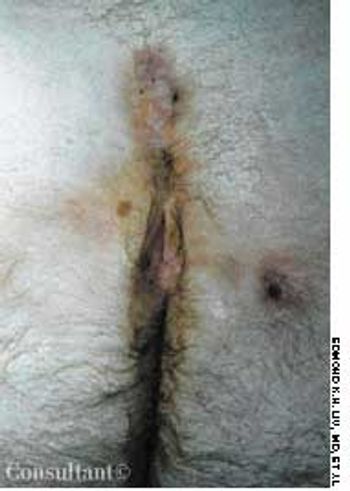
A 45-year-old man sought medical advice after suffering for 6 months with recurrent pain and a purulent discharge at the sacrococcygeal region. Two weeks before this consultation, an abscess on the patient's right buttock had been drained by another physician. The patient had insulin-dependent diabetes mellitus for 5 years; his medical history was otherwise unremarkable.

For 3 days, a 23-year-old woman had been bothered by pruritic vaginal and vulvar lesions. A cheesy white vaginal discharge was associated with the itching.
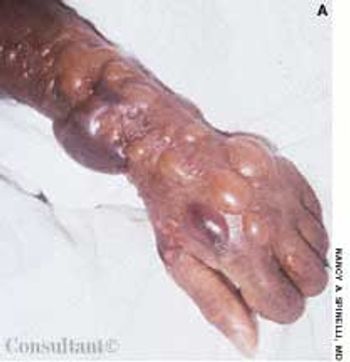
A 79-year-old nursing home resident was hospitalized for evaluation of hyperkalemia and leukocytosis. Her medical history included hypertension, respiratory failure with subsequent tracheostomy placement and ventilator dependency, and anemia. Both of her legs had been amputated above the knee secondary to complications of type 2 diabetes mellitus.

Concerned about a lesion between her eyes, a 91-year-old woman sought medical evaluation. She had not seen a physician for 23 years.
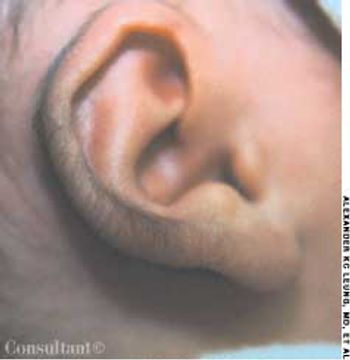
A boy was born to a gravida 2, para 1, 26-year-old woman at 37 weeks' gestation. The pregnancy had been complicated by gestational diabetes.

A 10-year-old boy presented with a 6-month history of a painless mass on the left side of the scrotum. The overlying skin had a bluish discoloration. The mass felt like a “bag of worms.” When the boy stood, venous varicosity could be palpated along the spermatic cord. This venous distention increased when he performed Valsalva's maneuver and decreased when he was recumbent.

A 76-year-old man reported a 3-month history of an asymptomatic, raised, reddened lesion on his penis. The patient had type 2 diabetes mellitus. In 1994, a basal cell carcinoma had been excised from his chest and, 3 years later, a squamous cell carcinoma was excised from his left temple.

A 44-year-old woman was being seen regularly for skin manifestations of systemic lupus erythematosus (SLE). During a routine visit, blotchy erythema and hyperpigmentation were noted on the normally exposed areas of her neck and upper chest; the submental area was spared. Close examination revealed fine telangiectases and poorly marginated hyperpigmented and hypopigmented macules.
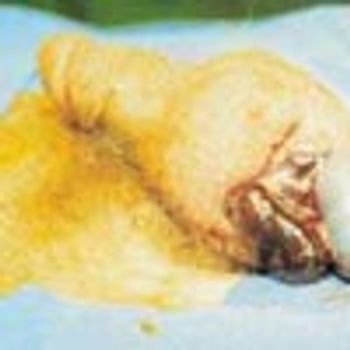
Severe pain in the scrotum during a soccer game sent a 14-year-old boy to his physician. The right testicle was swollen and exquisitely tender. On exploration, it was hemorrhagic and blue-black. A small incision in the tunica of the testis revealed arterial bleeding, which indicated that the testis was still viable. The right testicle was untwisted and fixed to the scrotum.
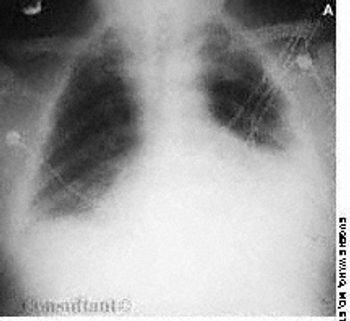
Over the previous 6 months, a 59-year-old man had experienced lethargy, fatigue, poor appetite, cold intolerance, and abdominal distention. His vital signs were normal; physical examination revealed periorbital and pretibial edema, distant heart sounds, and delayed reflexes.

These pruritic but otherwise asymptomatic lesions on the right upper arm of a 77-year-old woman first appeared about 1 year before she sought medical consultation. The patient's history included frequent, generalized pruritus, which was believed to be secondary to long-standing type 1 diabetes mellitus.
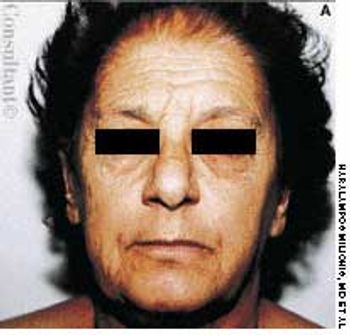
Diabetes mellitus recently had been diagnosed in a 58-year-old woman. The patient claims that her skin had darkened significantly over the past 5 years.
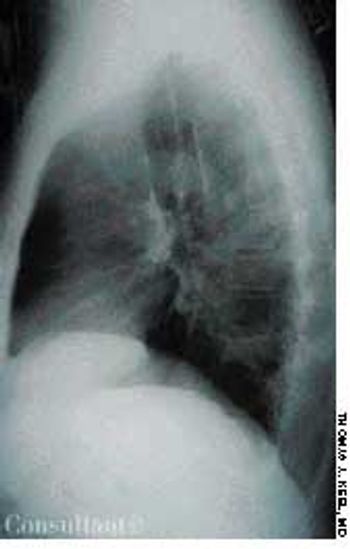
The wife of an 82-year-old man with Alzheimer's disease was concerned about her husband's poor posture. According to the woman, the patient had never sustained a back injury and had always maintained a sedentary lifestyle. He never smoked cigarettes and did not use alcohol. His history included multiple transient ischemic attacks (TIAs).

The bilateral breast hypertrophy seen on a 12-day-old boy's chest began 4 days earlier. This anomaly results from elevated levels of maternal circulating estrogen in late gestation that crosses the placenta and stimulates the baby's breasts. Both sexes are affected equally.
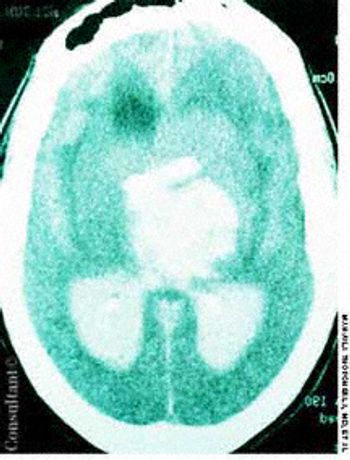
A 60-year-old comatose man was brought to the emergency department (ED). He had a history of diabetes, hypertension, and alcohol abuse. Relatives reported that the patient was noncompliant with his antihypertensive medication regimen.
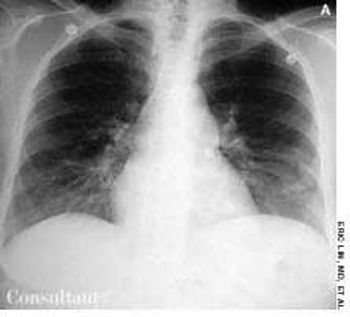
A 47-year-old woman presented to the emergency department with chest pain of sudden onset. The patient had no history of coronary artery disease, peptic ulcer, gastroesophageal reflux disease, or similar episodes of chest pain. She had not traveled long distances or suffered trauma or injury recently.
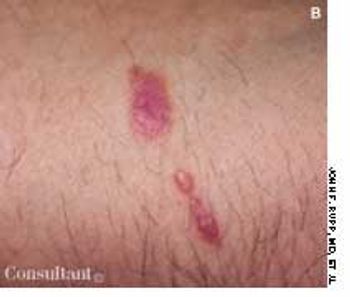
Lichen planus is characterized by flat-topped, polygonal, purple pruritic papules that have a predilection for flexor aspects of the wrists and forearms, sides of the neck, thighs, shins, and lower back. Lesions on the oral mucosa appear as white, lacy patches.
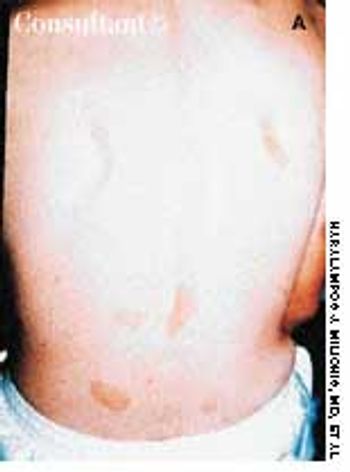
A 19-year-old man was referred for further investigation of multiple pigmented cutaneous lesions.
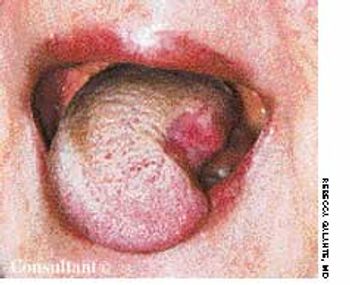
The initial complaint of a 79-year-old woman was of mild headache, neck pain, and sore throat. She had a history of hypertension, diabetes mellitus, and heavy cigarette smoking. Examination by an otolaryngologist, which included laryngoscopy, revealed no abnormalities. Three weeks later, the patient's throat and neck pain became more severe. She had no arthralgias, visual loss, fever, or worsening head pain.
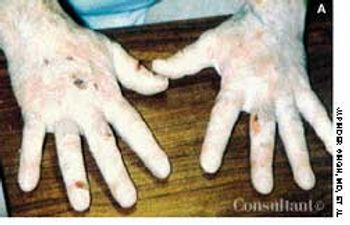
A 50-year-old man with a history of diabetes, hypertension, seizure disorder, and alcohol abuse sought treatment for a rash and painful ulcerations of the hand, face, and scalp, which had bothered him for 1 month. The patient also complained of pruritus.

An 18-month-old girl was noted to have somatic overgrowth, macroglossia, macrostomia, fading telangiectatic nevi over the glabella and eyelids, vertical creases on the earlobes, a short nose with anteverted nares, and a long philtrum. She also had an ejection systolic murmur best heard at the left mid- and upper sternal border, compatible with an atrial septal defect.
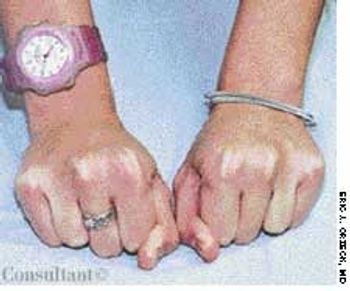
A 13-year-old girl was notably short and had short fourth metacarpals and metatarsals. She was very mildly mentally retarded.
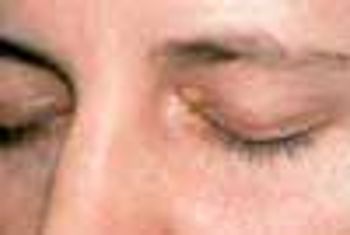
A 49-year-old woman noticed a growing lesion near the inner corner of her left upper eyelid. The lesion had become conspicuous because of its size and color; the patient wanted it removed.
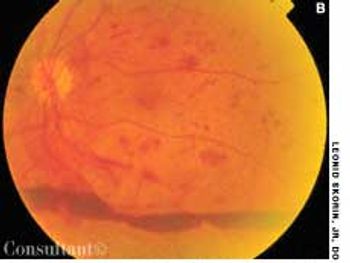
Type 2 diabetes was recently diagnosed in a 59-year-old woman whose vision in both eyes had been impaired for about 1 month. She had experienced fatigue and malaise for 4 to 6 weeks but had delayed seeking medical care.